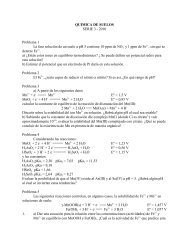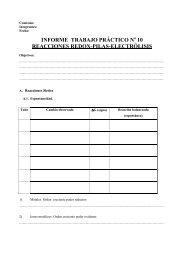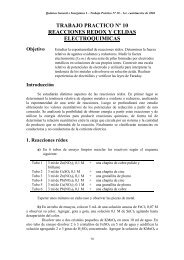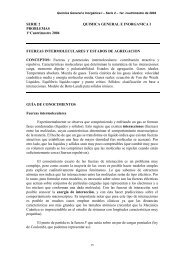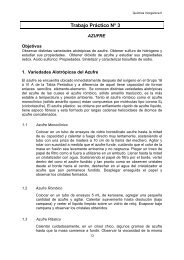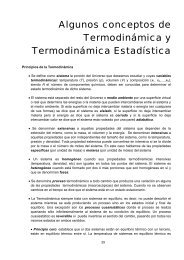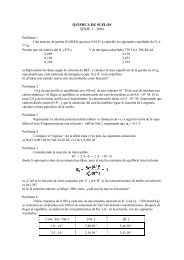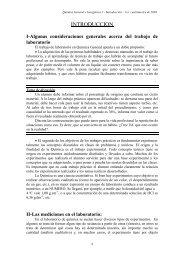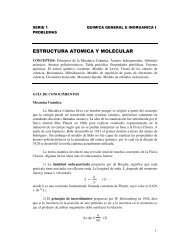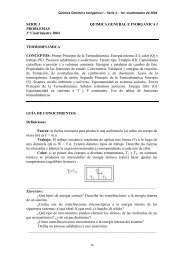Organic acid-induced release of lead from pyromorphite and its ...
Organic acid-induced release of lead from pyromorphite and its ...
Organic acid-induced release of lead from pyromorphite and its ...
Create successful ePaper yourself
Turn your PDF publications into a flip-book with our unique Google optimized e-Paper software.
F. Debela et al. / Chemosphere 80 (2010) 450–456 455tion water use, respectively) (CCME, 2005; Federal-Provincial-TerritorialCommittee on Drinking, 2008; WHO, 2008). For example,Pb <strong>release</strong>d by 100 lM oxalic <strong>acid</strong> (17.6 lM Pb) > 350 times theCanadian st<strong>and</strong>ard for drinking water while the Pb <strong>release</strong>d in50 lM acetic <strong>acid</strong> >40 times more. Soluble Pb in 50 lM mixed <strong>acid</strong>solution was above the Canadian drinking water quality st<strong>and</strong>ardby a factor <strong>of</strong> at least 250.Other environmental concerns include potential P efflux togroundwater <strong>and</strong> eutrophication <strong>of</strong> water bodies because the Padded to form PY far exceeds amounts typically used for agriculturalpurposes (Singh et al., 2001; Chen et al., 2003; Pierzynski<strong>and</strong> Gehl, 2004). The amounts <strong>of</strong> P <strong>release</strong>d in the LMWOA solutionsare much higher compared to mQ water <strong>and</strong> may potentiallycontribute to eutrophication. However, the high P <strong>release</strong>d in theLMWOA solution may benefit organisms in Pb-contaminated soilsbecause P is one <strong>of</strong> the three major elements needed by plants <strong>and</strong>soil organisms along with N <strong>and</strong> K.Although Pb <strong>and</strong> P are <strong>release</strong>d <strong>from</strong> PY reactions with LMWOA,the environmental fate <strong>of</strong> liberated Pb <strong>and</strong> P is subject to other processesin soils. Soluble Pb <strong>and</strong> P can adsorb on soil colloids (e.g.,negative <strong>and</strong> positive-charged soil organic matter) as well aschemisorb on the surface <strong>of</strong> oxides <strong>and</strong> oxyhydroxides. Researcheshave shown that PY formation in soil can be inhibited by the presence<strong>of</strong> dissolved organic carbon (Lang <strong>and</strong> Kaupenjohann, 2003)<strong>and</strong> organic matter (Hashimoto et al., 2009) through organo-metalcomplex formation. It can be argued that even if LMWOA results inhigher <strong>release</strong> <strong>of</strong> Pb <strong>and</strong> P <strong>from</strong> PY, the fate <strong>of</strong> liberated Pb <strong>and</strong> Pfaces many complex processes (e.g., organo-metal complex formation)before they become bioavailable. In other words, the dissolution<strong>of</strong> PY in natural soil systems <strong>and</strong> particularly in rhizospheresoil is much more complex than it is presented in a batch dissolutionexperiment, <strong>and</strong> therefore, our results are limited to just fewaspects <strong>of</strong> many complex processes in the environment.5. ConclusionsWe conclude that LMWOA are able to <strong>release</strong> more Pb <strong>from</strong> PYthan mQ water alone. One should be aware that under natural soilconditions, more dissolution <strong>of</strong> PY could be expected because severalLMWOA may occur in combination with many more <strong>acid</strong>s(e.g., aromatic <strong>acid</strong>s such as benzoic, p-hydroxybenzoic <strong>and</strong> protocatechuic)which have not been studied here. These <strong>acid</strong>s may havehigher dissociation constants <strong>and</strong> may result in much higher levels<strong>of</strong> soluble Pb 2+ <strong>release</strong>d <strong>from</strong> PY than the LMWOA investigated inthis study. On the other h<strong>and</strong>, because <strong>of</strong> the incomplete underst<strong>and</strong>ing<strong>of</strong> the nature <strong>of</strong> soluble Pb (<strong>and</strong> P) <strong>and</strong> interaction withcomplex solid phases, care should be taken in the interpretations<strong>of</strong> our results to assess the use <strong>of</strong> P amendment in remediationPb-contaminated soils.AcknowledgementsThis research was supported by the Canada Research Chair Program<strong>and</strong> the Natural Sciences <strong>and</strong> Engineering Research Council <strong>of</strong>Canada. We would like to thank A. Esler <strong>and</strong> Q. Wu for their assistancein ICP analyses.ReferenceAdriano, D.C., 2001. Trace Elements in Terrestrial Environments: Biogeochemistry,Bioavailability, <strong>and</strong> Risks <strong>of</strong> Metals, second ed. Springer-Verlag, New York.Adriano, D.C., Wenzel, W.W., Vangronsveld, J., Bolan, N.S., 2004. Role <strong>of</strong> assistednatural remediation in environmental cleanup. Geodrema 122, 121–142.Banfield, J.F., Baker, W.W., Welch, S.A., Taunton, A., 1999. Biological impact onmineral dissolution: application <strong>of</strong> the lichen model to underst<strong>and</strong>ing mineralweathering in the rhizosphere. Proc. Natl. Acad. Sci. USA 96, 3404–3411.Cao, X., Ma, L.Q., Chen, M., Singh, S.P., Harris, W.G., 2002. Impacts <strong>of</strong> phosphateamendments on <strong>lead</strong> biogeochemistry at a contaminated site. Environ. Sci.Technol. 36, 5296–5304.CCME (Canadian Council <strong>of</strong> Ministers <strong>of</strong> the Environment), 2005. Canadian WaterQuality Guidelines for the Protection <strong>of</strong> Agricultural Water Uses: SummaryTable (updated October 2005). Canadian Council <strong>of</strong> Ministers <strong>of</strong> theEnvironment, Winnipeg.CEPA (Canadian Environmental Protection Agency), 1999. Canadian EnvironmentalProtection Act, 1999. Minister <strong>of</strong> Justice (accessed 1.02.10).Chen, M., Ma, L.Q., Singh, S.P., Cao, R.X., Melamed, R., 2003. Field demonstration <strong>of</strong>in situ immobilization <strong>of</strong> soil Pb using P amendments. Adv. Environ. Res. 8, 93–102.Chrysochoou, M., Dermatas, D., Grubb, D.G., 2007. Phosphate application to firingrange soils for Pb immobilization: the unclear role <strong>of</strong> phosphate. J. Hazard.Mater. 144, 1–14.Dinkelaker, B., Romheld, V., Marschner, H., 1989. Citric <strong>acid</strong> excretion <strong>and</strong>precipitation <strong>of</strong> calcium citrate in rhizosphere <strong>of</strong> white lupin (Lupins albus L.).Plant, Cell Environ. 12, 285–292.Drever, J.I., Stillings, L.L., 1997. The role <strong>of</strong> organic <strong>acid</strong>s in mineral weathering.Colloids Surf., A 120, 167–181.Environment Canada, 2002. Children’s Environmental Heath. Envirozine(Environment Canada’s On-line Newsmagazine) Issue 20, Feature 2. (accessed 1.02.10).Federal-Provincial-Territorial Committee on Drinking Water, 2008. Guidelines forCanadian Drinking Water Quality Summary Table. Federal-Provincial-TerritorialCommittee on Health <strong>and</strong> the Environment. (accessed1.02.10).Fomina, M.A., Alex<strong>and</strong>er, I.J., Hillier, S., Gadd, G.M., 2004. Zinc phosphate <strong>and</strong><strong>pyromorphite</strong> solubilization by soil plant-symbiotic fungi. Geomicrobiol. J. 21,351–366.Fomina, M., Hillier, S., Charnock, J.M., Melville, K., Alex<strong>and</strong>er, I.J., Gadd, G.M., 2005.Role <strong>of</strong> oxalic <strong>acid</strong> overexcretion in transformations <strong>of</strong> toxic metal minerals byBeauveria caledonica. Appl. Environ. Microbiol. 71, 371–381.Fox, T.R., Comerford, N.B., 1990. Low-molecular-weight organic <strong>acid</strong>s in selectedforest soils <strong>of</strong> the southeastern USA. Soil Sci. Soc. Am. J. 54, 1139–1144.Gadd, G.M., 2004. Microbial influence on metal mobility <strong>and</strong> application forbioremediation. Geoderma 122, 109–119.Hashimoto, Y.M., Takaoka, M., Oshita, K., Tanida, H., 2009. Incompletetransformations <strong>of</strong> Pb to <strong>pyromorphite</strong> by phosphate-<strong>induced</strong> immobilizationinvestigated by X-ray absorption fine structure (XAFS) spectroscopy.Chemosphere 76, 616–622.Hettiarachchi, G.M., Pierzynski, G.M., Ransom, M.D., 2001. In situ stabilization <strong>of</strong> soil<strong>lead</strong> using phosphorous. J. Environ. Qual. 30, 1214–1221.Jarosz-Wilkolazka, A., Gadd, G.F., 2003. Oxalate production by wood-rotting fungigrowing in toxic metal-amended medium. Chemosphere 52, 541–547.JCPDS-ICDD, 2001. PDF-2 Data Base (Sets 1-51 plus 70-89) JCPDS – InternationalCentre for Diffraction Data. Newtown Square, PA.Jones, D.L., 1998. <strong>Organic</strong> <strong>acid</strong>s in the rhizosphere – a critical review. Plant Soil 205,25–44.Jones, D.L., Dennis, P.G., Owen, A.G., van Hees, P.A.W., 2003. <strong>Organic</strong> <strong>acid</strong> behavior insoils-misconceptions <strong>and</strong> knowledge gaps. Plant Soil 248, 31–41.Lang, F., Kaupenjohann, M., 2003. Effect <strong>of</strong> dissolved organic matter on precipitation<strong>and</strong> mobility <strong>of</strong> the <strong>lead</strong> compound chloro<strong>pyromorphite</strong> in solution. Eur. J. SoilSci. 54, 139–148.Lindsay, W.L., 2001. Chemical Equilibria in Soils, second ed. The Blackburn Press,New Jersey.Ma, L.Q., 1996. Factors influencing the effectiveness <strong>and</strong> stability <strong>of</strong> aqueous <strong>lead</strong>immobilization by hydroxyapatite. J. Environ. Qual. 25, 1420–1429.McBride, M.B., 1994. Environmental Chemistry <strong>of</strong> Soils. Oxford University Press,New York.Melamed, R., Cao, X., Chen, M., Ma, L.Q., 2003. Field assessment <strong>of</strong> <strong>lead</strong>immobilization in a contaminated soil after phosphate application. Sci. TotalEnviron. 305, 117–127.Nriagu, J.O., 1973. Lead orthophosphates-II. Stability <strong>of</strong> chloro<strong>pyromorphite</strong> at 25 C.Geochim. Coscmochim. Acta 37, 367–377.Pierzynski, G.M., Gehl, K.A., 2004. An alternative method for remediating <strong>lead</strong>contaminatedsoils in residential areas: a decision case study. J. Nat. Resour. LifeSci. Ed. 33, 63–69.Robarge, W.P., 1999. Precipitation/dissolution reactions in soils. In: Sparks, D. (Ed.),Soil Physical Chemistry. CRC Press, Boca Raton, pp. 193–238.Ryan, P.R., Delhaize, E., Jones, D.L., 2001. Function <strong>and</strong> mechanism <strong>of</strong> organic anionexudation <strong>from</strong> plant roots. Annu. Rev. Plant Physiol. Plant Mol. Biol. 52, 527–560.Ryan, J.A., Scheckel, K.G., Berti, W.R., Brown, S.L., Casteel, S.W., Chaney, R.L.,Hallfrisch, J., Doolan, M., Grevatt, P., Maddaloni, M., Mosby, D., 2004. Reducingchildren’s risk <strong>from</strong> <strong>lead</strong> in soil. Environ. Sci. Technol. 38, 19A–24A.Sayer, J.A., Cotter-Howells, J.D., Watson, C., Hillier, S., Gadd, G.M., 1999. Leadmineral transformation by fungi. Curr. Biol. 9, 691–694.Scheckel, K.G., Ryan, J.A., 2002. Effects <strong>of</strong> aging <strong>and</strong> pH on dissolution kinetics <strong>and</strong>stability <strong>of</strong> chloro<strong>pyromorphite</strong>. Environ. Sci. Technol. 36, 2198–2204.Scheckel, K.G., Ryan, J.A., 2003. In vitro formation <strong>of</strong> <strong>pyromorphite</strong> via reaction <strong>of</strong> Pbsources with s<strong>of</strong>t-drink phosphoric <strong>acid</strong>. Sci. Total Environ. 302, 253–265.Shen, Y., Strom, L., Jonson, J., Tyler, G., 1996. Low-molecular organic <strong>acid</strong>s in therhizosphere soil solution <strong>of</strong> beech forest (Fagus sylvatica L.) Cambisols





